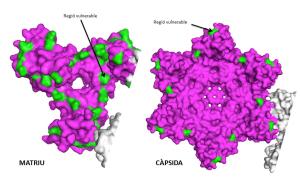IrsiCaixa describes new mutations that allow HIV to give rise to antiretroviral resistance
Protease inhibitors are a family of antiretroviral drugs that block HIV protease, a key protein in virus maturation. These drugs block this enzyme, making the virus not mature and therefore not infectious. When treatment with protease inhibitors fails, it is usually because HIV becomes resistant by mutating in very specific positions of the protease. However, there are patients in whom the treatment does not work and in whom these mutations are not detected. Scientists at the IrsiCaixa AIDS Research Institute discovered that this might be due to mutations in regions outside the protease, specifically in the proteins of matrix and capsid HIV-zones, which had not been identified until now. Thus, this discovery describes vulnerable regions of HIV as potential targets to design new drugs. It would also allow to anticipate whether someone is infected with this kind of resistant virus and to adapt his antiretroviral treatment.
"Over the past few years, we have been wondering what happens in areas outside the protease so that drugs are not effective," explains Julia García Prado, IrsiCaixa's Viral Immune Evasion and Vaccines (VIRIEVAC) group. "Previous studies described that there were non-protease mutations involved in these resistance mechanisms, and our goal was to identify in which area of the virus those mutations were," she adds.
Scientists sequenced the DNA of the virus from patients treated with protease inhibitors for at least 9 years, to analyse how protease and the HIV structural protein gag evolved during prolonged administration of drugs. This allowed them to identify regions of the virus involved in the acquisition of resistance to protease inhibitors, which were "unknown until now, but important," says García Prado.
The paper improves the understanding about the virus dynamics of evolution in the presence of drugs. In addition, it can help to define vulnerable areas that allow the design of new drugs against the virus matrix and capsid, increasing the effectiveness of antiretroviral treatment. Capsid inhibitors are currently in early stages of development, and there is no matrix inhibitors. "By designing inhibitors of the matrix and the capsid, protease inhibitor resistant viruses would be blocked, because they could not mutate in these areas essential for their survival," concludes García Prado.
Protease Inhibitors
Protease inhibitors are one of the four current families of antiretroviral drugs. They have an important role as second- and third-line drugs, administered to patients in whom first-line drugs do not work. HIV needs to develop several mutations to become resistant to these drugs, whereas a single mutation is sufficient with other families.
IrsiCaixa Outreach video - How do HIV drugs work?
